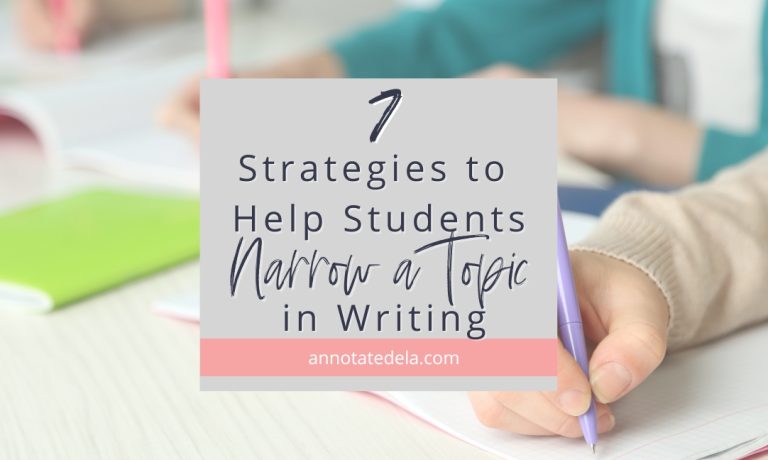Asking a student to narrow a topic is like asking them to explain quantum physics. Fortunately, there are simple strategies you can use to quickly identify and focus on relevant ideas and topics.
Having students consider their topic on a smaller scale helps them realize their focus and stay on that narrow topic while they write.
A writer’s notebook is an essential tool for the writing classroom. Whether you are new to writer’s notebooks with your students or have been using them for years, grab the 5 Day Writer’s Notebook Challenge to transform your writing classroom.
Craft the Title
Having students write the title for their draft is one way to narrow a topic for writing. This can be done before the student starts writing or after.
Having students craft multiple titles after writing is most powerful because it allows them to see what they have written through a different lens. Crafting more than one title is also important because the student can choose the title that feels most true to their draft.
After crafting titles, the student should reread their draft with that title in mind. If the draft supports the title, they have maintained focus, but if it does not support the title, they may need to revise.
This is why writing the title after the draft is most successful; students can pick a title that best fits the focus.
Possible Prompts:
- Write a broader title and one that is narrower
- Take out some of the words
- That title is long; what would happen if you shorten it?
- Play with the language of the title. Try writing it in different ways
- Swap out some words for more precise words.

Zoom In
With older students, it is easier to ask them to take a broad topic or memory and think about the smaller parts. Students can identify one part of the memory or the big idea that seems most important. This is one way to zoom in and narrow a topic.
With younger students or students struggling to zoom in from a bigger idea, have them start with a small memory or idea. This can be difficult as well, so it is important to have prompts and ideas ready to guide the student in narrowing a topic.
Have students write about the small parts and why the parts are important. They can write about it little by little.
Possible Prompts:
- What moment out of all of these do you want to zoom in on?
- Replay the whole memory and pick a smaller part.
- I’m going to list the small moments you mentioned. Tell me which one you choose.
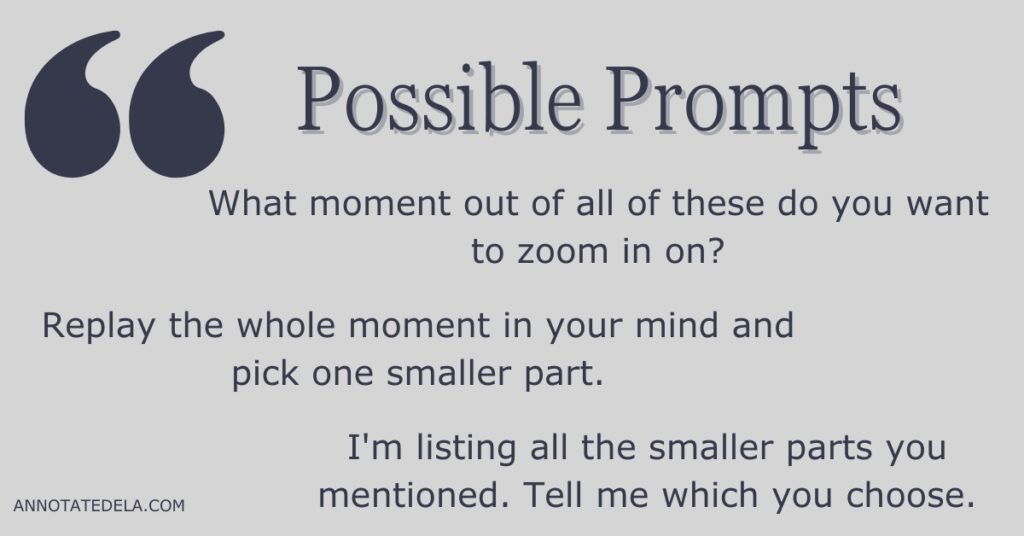
Consider Audience & Purpose
Every writing piece should consider the audience and purpose, but this is also helpful to narrow a topic. Have students think about the purpose for their writing, PIEED – persuade, inform, entertain, explain, or describe.
Then have the student think specifically about who they are writing the piece for or who they want to read the piece. Once the student clearly understands the audience and purpose, they can determine the structure or genre and angle of the piece.
Possible Prompts:
- Who are you writing to or for? What would they be most interested in reading about the topic?
- What genre would fit your intention?
- Explain or describe your purpose for writing.
- Now that you know who and what you are writing for, what angle will you take in the topic?
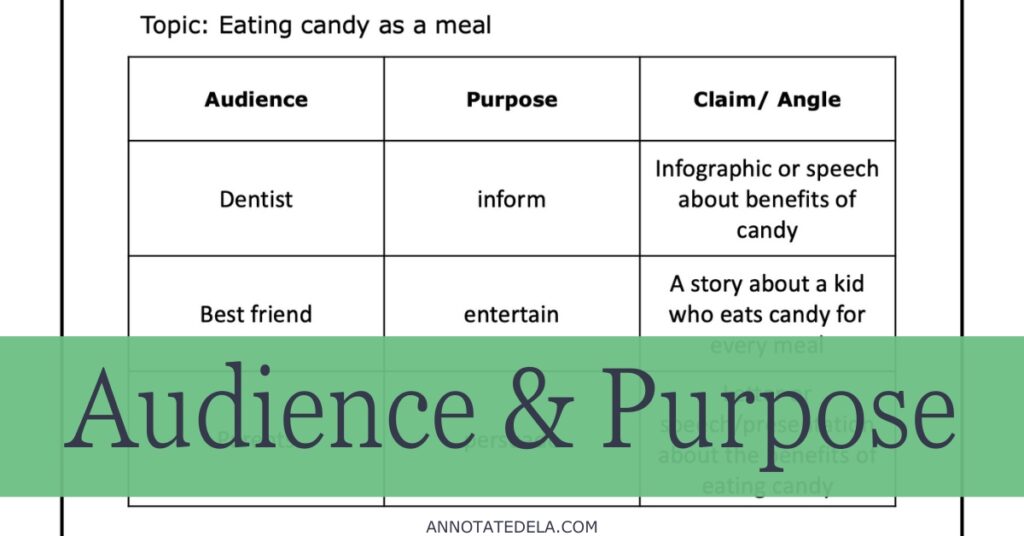
Pick the Most Important Line
This is great for shorter pieces of writing or essays that are shorter. Have the student(s) read over the entire piece of writing and highlight or underline the one line that says the most about the piece (what they want the piece of writing to be about).
Then have the student reread the entire piece of writing, keeping that one line in mind. Have the student(s) consider how the writing supports and enhances that one line. What needs to be changed or added to better support and enhance the one line?
Having one line in mind will help narrow a topic and focus the writing.
Possible Prompts:
- What do you think the writing is about?
- Look through your writing and find one line that captures the meaning.
- Reread, keeping your one line in mind.
- What needs to be changed/added/cut to enhance and support the meaning?
- Why does that one line capture the meaning?
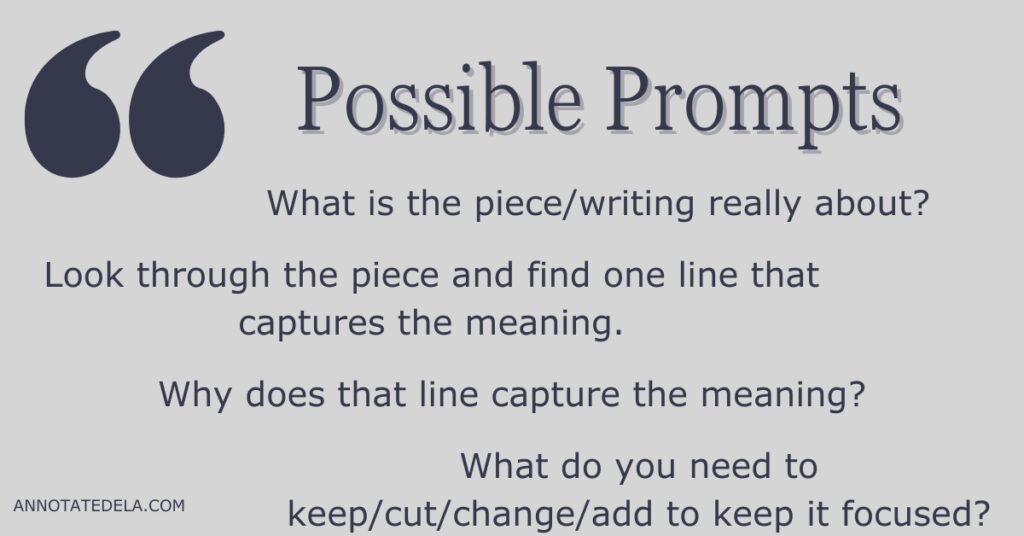
Visualize
This strategy works best when writing narratives, but it can be used with other writing genres to narrow a topic.
The student can visualize the idea before or after drafting. It is most effective to visualize BOTH before and after. As writers, we tend to stray from the topic, and having the visual before will help when we are finished and want to revisit the visual.
Have the student draw the idea or memory. Does the writing support the visual? Are there too many details? Need more details?
If students do not want to draw, have them stop writing and make a mental image. Then explain what they see and share what symbols represent the visual. Then have the student go back and explain how the details in writing support the symbols and that image.
Possible Prompts:
- Reread your piece and think about what is most important.
- Before your draft (or now that you have drafted), what is the one image that represents your idea?
- When you think about your idea or topic, what image comes to mind?
- If it helps to draw it, do it.
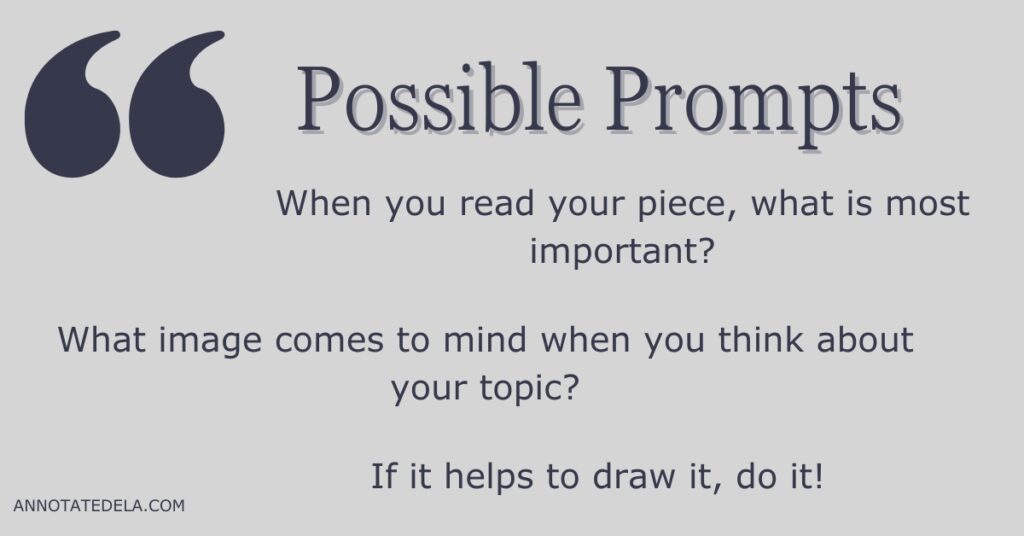
Draft the Thesis
This is the most effective strategy (and the one my students always do) when we are writing any genre that is not narrative. This is the best way I have found to narrow a topic.
Students will take the assigned prompt and write a thesis statement. Every claim and explanation must support the thesis. If it does not support the thesis, it is not needed.
This isn’t easy because students think everything is necessary and will write whatever comes to mind. It is easy for the teacher to direct student attention to the thesis and ask how the ideas support it.
Possible Prompts:
- What is the main idea in your writing?
- Does the thesis match your main idea?
- Does this claim support or prove the thesis?
- What can you add or change to support the thesis?
Summarize
When students summarize their topic before drafting their piece, it helps them narrow a topic and identify the main idea.
As the student(s) draft their piece, they can refer to the summary and check that their writing supports the main idea from the summary. This also allows the teacher to identify whether the student’s writing is focused quickly. Guiding what needs to be added or changed.
Helping students narrow a topic can be challenging, but it is an important skill for students to be able to focus their writing.

